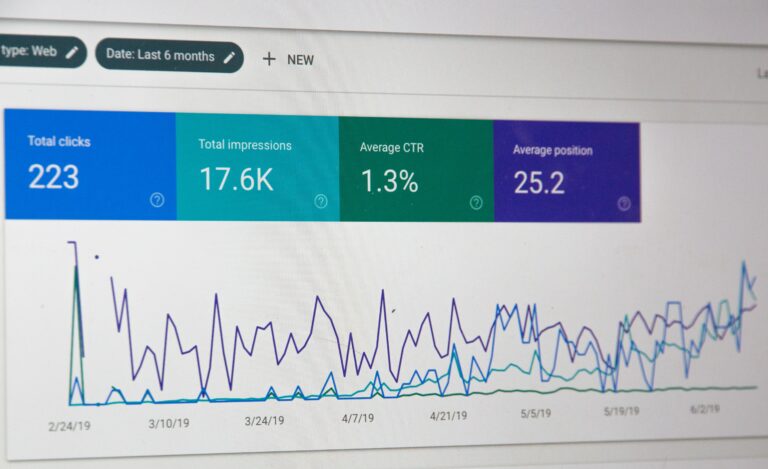Have you ever tried to implement an SEO project and received pushback from IT, development, product, design, UX, brand, content strategy, or any other non-SEO team?
If so, you aren’t alone.
SEO is often dependent on other teams, and your project can be dead on arrival without the right support.
Therefore, gaining stakeholder buy-in is a critical, yet challenging, component of implementing an SEO project.
To solve this challenge, I’ve heard many people say that getting SEO a seat at the table can help get that necessary buy-in and prioritization.
However, SEO professionals should aim for more because what value does that seat have if you aren’t given the chance to speak at that table, or if no one else is seconding your opinion, or if you’re not invited to the right meeting?
Don’t get me wrong.
Getting a seat at the table is a critical first step, but the seat is not enough.
Instead, we need to think about how we can enable those not on team SEO to make the best SEO decisions and to advocate for the organic channel on their own, regardless of if we’re there at the table or not.
SEO Enablement Is the Key to Implementation
Many times, our job as SEO professionals forces us to act either as gatekeepers or, as my colleague Stephan Bajaio puts it, as janitors.
As gatekeepers, we’re charged with QAing every content and technical decision to ensure SEO best practices are followed.
As janitors, we’re forced to retroactively fix or mitigate decisions other teams make that inevitably stunt or damage SEO progress.
Neither position is ideal.
This is when enabling SEO in your organization can help.
SEO enablement is the continuous process of sharing SEO knowledge, resources, and tools with other teams so that they are empowered to make decisions that always align with SEO best practices for every project.
Creating this process in your organization democratizes SEO and helps others develop an SEO mindset.
Some positive outcomes from this process are the following:
- Easier to get project buy-in since you have support and advocates from multiple teams.
- Keeps SEO top of mind when other teams are building and prioritizing their roadmaps.
- Develops workflow efficiencies.
- Allows for coordinated cross-channel and cross-team strategies and execution.
In this way, SEO becomes a team sport, with responsibilities shared across the organization.
You no longer have to play the role of gatekeeper or janitor.
Here are some ideas on how to enable SEO in your organization.
1. Teach, Don’t Preach
We tend to use a lot of technical jargon in SEO.
To those who don’t understand SEO like we do, it can be incredibly off-putting and unintentionally cause them to tune out.
You want to avoid this reaction.
Every time you communicate out an SEO recommendation, think of it as a mini SEO business case, or a persuasive essay.
You want to keep your audience engaged and for them to buy into what you’re saying.
When you send an SEO POV email, or you’re asked to present SEO data to a group of stakeholders, don’t just throw out a recommendation with a bunch of unintelligible data and charts.
Frame SEO accessibly.
Take the time to explain, even if it takes longer to craft your message, and even if you’ve explained the same concept multiple times to the same people.
Whenever I’m providing an SEO recommendation to stakeholders, I like following this format:
- TLDR Executive Summary: Provide 2-3 sentences at the top with your SEO recommendation.
- What’s the issue? Explain the SEO problem you’re trying to solve. This section will normally contain definitions for jargon.
- Why is it important? Explain why SEO should be considered in this project. This section is a good one to pull out best practices, quotes from industry experts, and the like to reinforce the importance.
- What’s the impact on performance? Explain what can happen if they follow your recommendations to a T, and on the flip side, what can happen if they only partially implement (or pass on your recommendation). Use case studies and data to showcase your point.
The more you explain SEO in a way people can understand, the more you reinforce the concepts, and the easier it is for others to internalize this information.
Do this enough times and pretty soon, you won’t need to be the one communicating these concepts; they’ll start doing it for you!
2. Develop SEO Skills Outside Your Team
There are certain SEO skills that are critical to making sound SEO decisions.
It’s important that others across your organization have these skills as well.
Helping your team and colleagues develop these skills can remove roadblocks to decision-making and implementation.
Bonus: It also helps them advance professionally.
Here are some useful skill sets for SEO stakeholders.
Analytical Skills
Many website projects can impact SEO performance, so it’s helpful if other teams understand this and know what and how to pull the most relevant data sets that will help them execute on their project.
Teach your stakeholders the value of incorporating SEO data in their workflows and show them which metrics and reports are most important to look at and why.
Here are some examples:
- For dev teams: Talk to them about the importance of technical SEO. Then, empower them to monitor and extract these insights themselves by analyzing crawl data.
- For writers: Convey the importance of keyword research, then teach them how to track and monitor keyword visibility of their published content.
- For designers and UX strategists: Explain how Google crawls and renders pages, then show them the traffic impact of pages that aren’t well-linked or have hidden content.
They don’t need to know how to do every SEO task under the sun.
However, teaching others how to analyze SEO data that is most relevant to their role will help them develop an SEO mindset that can help them – and you – execute a project.

Excel Shortcuts & Data Manipulation
So much of SEO work starts and ends in Excel.
However, Excel can be a big barrier to entry for many SEO stakeholders.
After all, even if people know how to pull SEO data themselves, they may not want to if it means manually sorting through thousands of rows of keyword rank or traffic data.
To combat this, teach your colleagues common Excel formulas, or send them a starter Excel template with pre-built in formulas and pivots for them to use.
Do you work with product managers seeking data to benchmark a project?
Teach them how to use VLOOKUPs to marry landing page traffic to keyword rank data.
Do you work with content strategists researching ideas for their next campaign?
Teach them how to use IF formulas to categorize keyword data by content theme and quickly see topics that have the greatest search demand.
The list goes on.
For more Excel ideas, Distilled has an amazing Excel for SEO guide, with many useful formulas you can use for common SEO tasks.
Alternatively, check out Aleyda Solis’s Google Sheets for SEO for more advanced but incredibly helpful use cases and workflows to share with your team.
3. Equip People with the Right Tools
When I first started out as an SEO, my default was always to restrict tool access and instead only share out finalized research documents and “client-ready” reports.
I came to realize that this mindset is the wrong way of going about things.
When you’re the only person who has access to or knows how to use SEO tools, you remain in that “gatekeeper” role.
As such, people have no choice but to ask you for SEO data or a POV instead of doing it themselves.
Thus, SEO remains in their periphery instead of becoming an integrated component of their workflow.
Give others the tools and training they need to integrate SEO in their day-to-day.
This is a must-do if you want to develop an SEO mindset within the broader organization.
At a minimum, here are the platforms I recommend sharing access with other folks in the organization:
- Content Analytics: To enable traffic analysis and trends reporting.
- Keyword Analytics: To enable topic research and visibility tracking.
- Website Crawling: To enable technical issues diagnosis and monitoring.
- SEO Chrome Extensions and Testing Tools: To enable quick SEO insights.
When other teams have access to your tools and can research and monitor themselves, they’ll start feeling partly responsible for the channel and will make decisions accordingly.

4. Create a Culture of Knowledge Sharing
There’s an old proverb you may have heard before:
“Give a person a fish and you feed them for a day. Teach a person to fish and you feed them for life.”
Teaching others SEO concepts and workflows, especially those that connect to their responsibilities, is one of the best ways to enable SEO.
Here are some ways you can do this.
Host Lunch & Learns
Create a form and ask people for input on which topics they’d be most interested in learning.
Don’t just make it all SEO all of the time either. Ask people from other teams to share their knowledge.
Sessions like this can help break down silos and create a better understanding of what is important to other teams.
Develop SEO Workshops
Coordinate with team leads to develop SEO sessions and workshops, and customize the content to be relevant to each team.
I like hosting multi-part training sessions, so as not to overwhelm people.
The first session is geared towards providing an intro to SEO and the value it provides to the business. The second session can then be more tactical, where you walk through specific workflows.
Set up a Recurring ‘Office Hours’ Meeting
Create an optional, recurring meeting at a cadence that makes sense for your company and invite people you often work with on cross-functional projects.
This meeting can be an open session where people can go to you for one-off advice, questions, or help.
Yes, it’s more meetings on the calendar.
However, office hours can not only cut down on drive-bys but also offer another way to teach others how to troubleshoot SEO problems on their own.
Create a Slack Channel
Start a channel and open it to anyone who wants to join.
The channel can be a space to share SEO tips, articles, case studies, and shout-outs.
In the past when I’ve done this, I invited folks from many other departments, and it was a helpful way to share quick tips and industry news.
In Summary
With so many competing priorities and tasks, it can be hard to find the time to prioritize SEO enablement.
Enablement is a critical part of ensuring SEO gets the right buy-in and prioritization.
It’s important that you don’t just give your stakeholders the insight.
Show them the steps you took to get to that decision and teach them how to do it themselves the next time they encounter this issue.
This process will help you take back the time you spend managing minutiae and putting out fires and instead allow you to focus on those high-impact projects, as well as create a system of SEO believers who will advocate for the organic channel.
More Resources:
- Why You Should Integrate Search Marketing into Your Organization’s Culture
- SEO Is Everyone’s Responsibility: 5 Tips to Get Non-SEOs Bought Into SEO
- 11 Ways Get Maximum Efficiency from Your SEO Team’s Efforts
Image Credits





